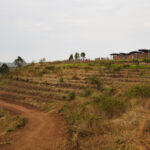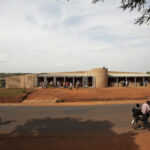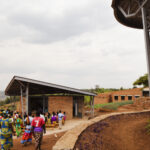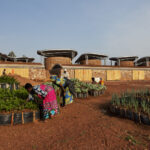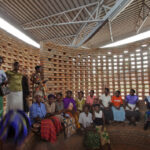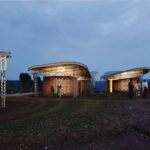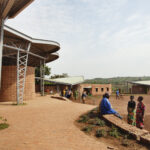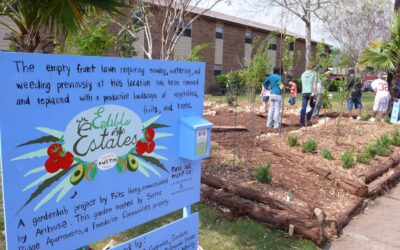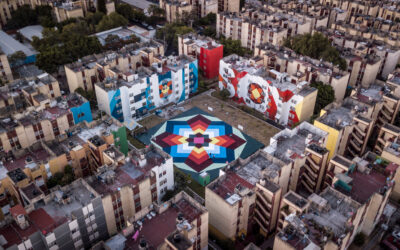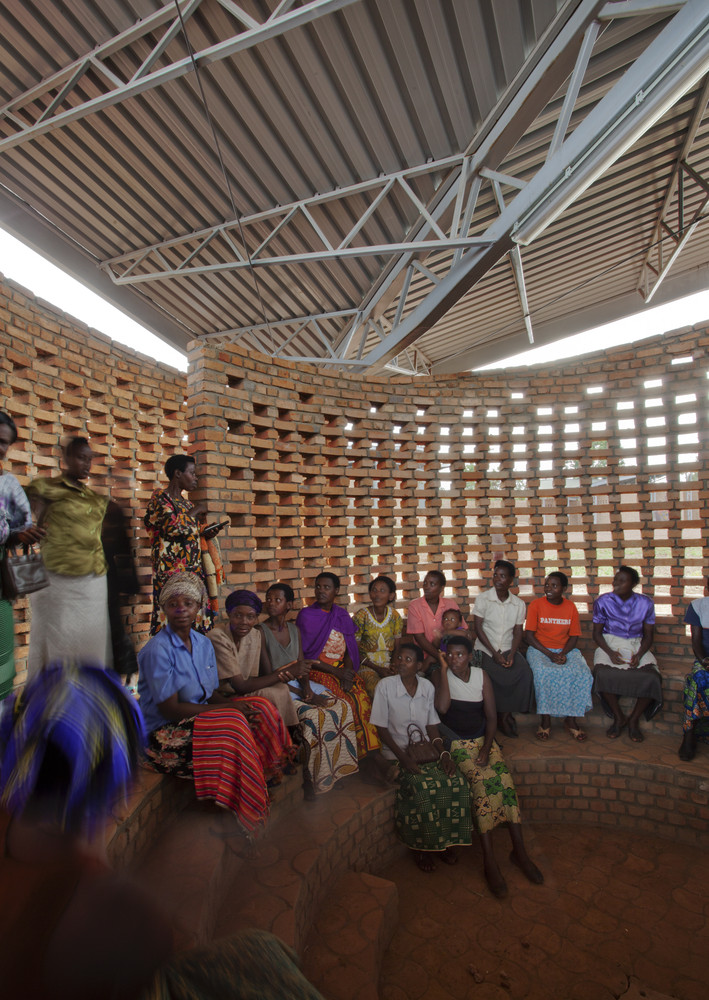
Designed by Sharon Davis Design Studio and located on a one-hectare site in the Kayonza district in eastern Rwanda, the Women’s Opportunity Center is energizing one small community’s subsistence-agriculture economy through female empowerment. Traveling to the center’s daytime classes and events on foot, residents—many of them survivors of war—learn income-generating skills, such as animal husbandry and processing techniques that can sustain food cooperatives. As many as 300 women participate in training at any time.
The project is organized in a manner akin to a vernacular Rwandan village, divided into 17 human-scale pavilions whose clustered arrangements engenders familiarity and community among occupants. The project includes a demonstration farm that helps women produce and market their own goods. This Commercial Integrated Farming Initiative teaches women to produce income from the land through organic techniques geared toward commercial production. Through compact, easily maintained animal pens and classrooms— cooled by green roofs and retained earth walls—women learn to raise pigs, cows, goats, and rabbits, along with food storage and processing methods that can be used to run their own food cooperatives profitably. Set around an inviting plaza easily reached by motorists and public transit, a market showcases the center’s economic potential. Here, women sell food, textiles, baskets, and other products produced on site, as well as potable water harvested from the center’s rooftops. Market spaces can be rented to generate additional income, building a self-sufficient community network in Kayonza. Potable water is collected from the pavilions’ corrugated roofs, they partnered with local enterprises to create water purification, biogas, and other sustainable systems that can be produced and maintained by the inhabitants themselves. For example, in place of pit latrines typically found in Rwanda – which pollute groundwater aquifers and are vectors for disease – Sharon Devis Design office have designed simple, hygienic composting toilets that reduce water use while capturing nitrogen-rich solid and liquid waste. The easily managed system naturally produces fertilizer that can nourish the farm or be sold as part of the site’s revenue-generating strategies. Vegetation planted on two of the structures provides their interiors with extra insulation. The facility is designed in collaboration with the humanitarian organization Women for Women International and as such it poses a more expansive role for architects. In particular, the design of the Women’s Opportunity Center takes social equity into consideration, by weaving job training into the scheme. Future students were assigned the manufacture of pavilions’ bricks, using clay extracted from nearby sites as well as a manual press method adapted from local building techniques. Hands-on construction administration improved workers’ skills, as well.
Recommended by Luisa Bravo
Main source: https://sharondavisdesign.com/project/womens-opportunity-center-rwanda/
Additional source:
https://www.archdaily.com/433846/women-s-opportunity-center-sharon-davis-design
